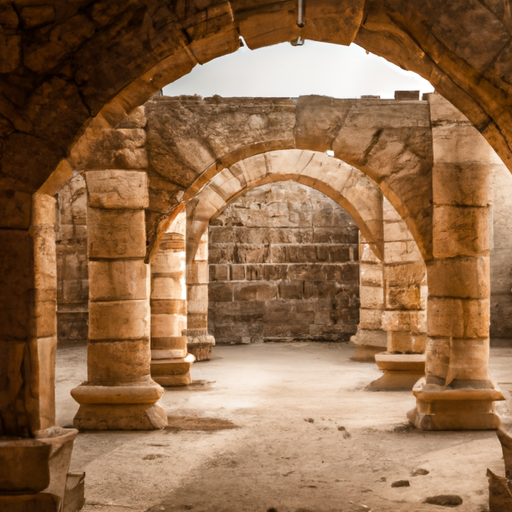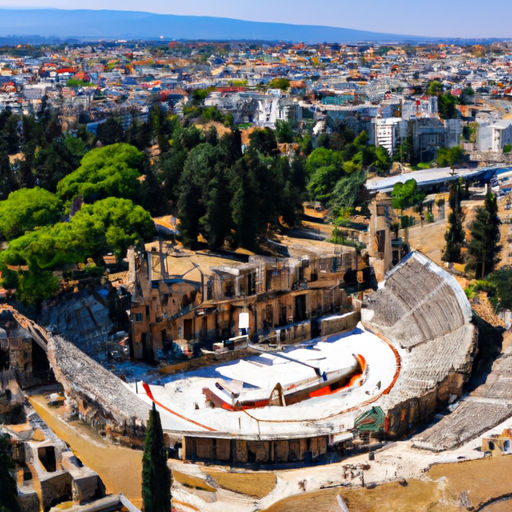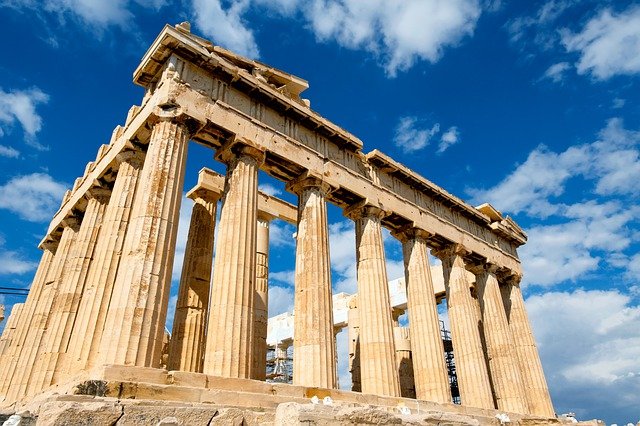Unveil the captivating history of the Ancient Ruins of Caesarea, a Roman city rich in historical significance, architectural marvel, and cultural fusion. This blog post takes you through a detailed journey, revealing the city's profound history, its architectural brilliance, and the fascinating stories of its past.
Unveiling the Historical Significance: Why Caesarea?
Caesarea, located along the Mediterranean coast of modern-day Israel, holds a captivating historical significance that draws countless visitors each year. This ancient city, founded by Herod the Great in the 1st century BC, served as a major port and played a pivotal role in the Roman Empire. Its strategic location between Europe and Asia made it an important center for trade and communication.
Stepping foot in Caesarea is like stepping back in time, as the ruins offer a glimpse into the rich history and cultural heritage of the region. The city thrived under Roman rule and was adorned with magnificent structures, showcasing the opulence and grandeur of the era. The remnants of this once-thriving port city still stand today, allowing visitors to explore and immerse themselves in the ancient world.
Caesarea's historical significance extends beyond its Roman heritage. It also played a crucial role in the development of early Christianity. It was in Caesarea that the Apostle Peter converted the first Gentile, Cornelius, and where the Apostle Paul was imprisoned before being sent to Rome for trial. The city became an important center for early Christians and was the site of numerous religious events and debates. Understanding the historical context of Caesarea allows visitors to appreciate the complexity and importance of this ancient city.
Furthermore, Caesarea's historical significance is not limited to its ancient past. The city has witnessed the rise and fall of various civilizations throughout the centuries, including the Byzantines, Crusaders, and Ottomans. Each era has left its mark on the city, resulting in a unique blend of architectural styles and cultural influences. Exploring the ruins of Caesarea offers a comprehensive understanding of the city's evolution and its enduring legacy.

A majestic view of the stone arches and ancient columns of Caesarea
Caesarea's Architectural Splendor: A Glimpse of the Past?
The architectural splendor of Caesarea is truly remarkable, offering visitors a glimpse into the past and showcasing the ingenuity and craftsmanship of ancient civilizations. The ruins of Caesarea exhibit a blend of Roman, Byzantine, and Crusader architectural styles, reflecting the city's diverse history and the influence of various cultures.
One of the most striking structures in Caesarea is the Herodian Amphitheater. Built by Herod the Great, this magnificent theater could accommodate up to 4,000 spectators. Its exquisite design and impressive acoustics allowed for grand performances and entertainment. Today, visitors can still marvel at the well-preserved seating area and stage, envisioning the lively atmosphere that once filled the amphitheater.
Another highlight of Caesarea's architectural splendor is the Crusader Fortress. This imposing structure, built during the Crusader period, stands as a testament to the military prowess and defensive strategies of the time. The fortress boasts thick walls, watchtowers, and a moat, showcasing the ingenuity and advanced construction techniques employed by the Crusaders.
In addition to these iconic structures, Caesarea is also home to a network of ancient streets and buildings, including a Roman temple, a Byzantine cathedral, and a hippodrome. These remnants offer a fascinating insight into the daily life of the city's inhabitants and provide clues about the cultural, religious, and social aspects of the time.
From the Roman Theater to the Hippodrome: What Stories Do These Ruins Tell?
As you wander through the ancient ruins of Caesarea, you can't help but wonder about the stories that these remnants hold. The Roman Theater, with its grand seating area and stage, speaks of the vibrant cultural scene that once thrived in this coastal city. It tells tales of performances by actors, musicians, and storytellers who entertained the crowds with their talents. Imagining the applause and laughter that filled the air, you can almost feel the energy and excitement of the spectators.
Moving on to the Hippodrome, you can almost hear the thundering hooves of horses and the cheers of the crowd. This oval-shaped arena, reminiscent of ancient chariot races, tells stories of intense competitions and the skill and bravery of the charioteers. It was a place where fortunes were won and lost, where rivalries were born, and where the spirit of competition was celebrated. The Hippodrome serves as a reminder of the importance of sports and entertainment in the lives of the people of Caesarea.
These ruins not only tell stories of entertainment but also hold a historical significance. They bear witness to the city's transformation over the centuries, from a thriving Roman port to a bustling Byzantine center and eventually a Crusader stronghold. Each layer of civilization left its mark on Caesarea, and these ruins serve as a tangible connection to its rich and complex past. They remind us of the ebb and flow of history, the rise and fall of empires, and the resilience of the people who call this place home.

A panoramic shot of the Roman Theater and the Hippodrome, teeming with historical significance
Caesarea: Just an Archaeological Site or a Reflection of an Era?
Caesarea is not just an archaeological site; it is a reflection of an era that shaped the course of history. These ruins provide a glimpse into the lives of the people who once walked these streets, who built magnificent structures and left behind a legacy that continues to captivate us today. It is a testament to the ingenuity and creativity of ancient civilizations and their ability to create timeless works of art and architecture.
As you explore the remains of Caesarea, you can't help but be amazed by the intricate details and craftsmanship that went into its construction. The remnants of grand buildings, such as the Herodian palace and the Byzantine bathhouse, are a testament to the architectural expertise of the time. The precision and artistry exhibited in these structures serve as a reminder of the advanced engineering techniques employed by ancient civilizations.
Beyond the physical structures, Caesarea also offers insights into the social and cultural aspects of the era. The ruins of the marketplace and the residential areas provide a glimpse into the daily lives of the people who call this place home. Walking through the streets, you can almost imagine the hustle and bustle of traders, the laughter of children playing, and the gathering of families for meals and celebrations. It is a reminder that behind the grandeur of the buildings, there were ordinary people living their lives.
Through the journey to the Ancient Ruins of Caesarea, we experience more than just archaeological sites; it's a profound journey through time, reflecting the grandeur of a bygone era. The city's complex history and architectural brilliance offer a captivating glimpse of the Roman, Byzantine, and Crusader periods. Caesarea tour opens up a whole new perspective on history, culture, and life as it was in the ancient world.
